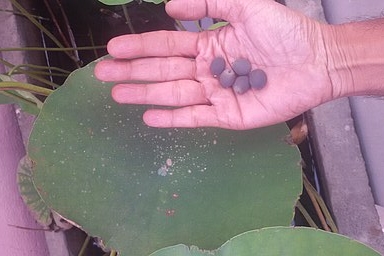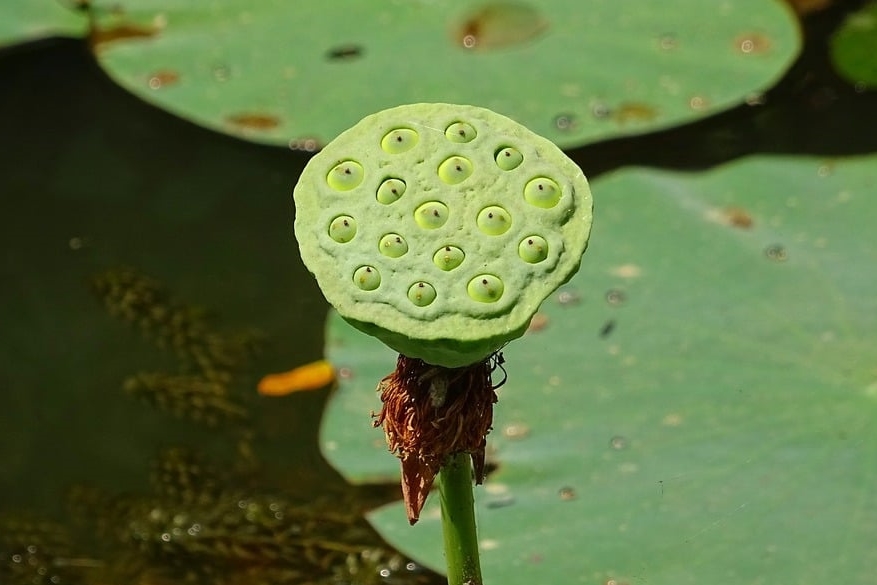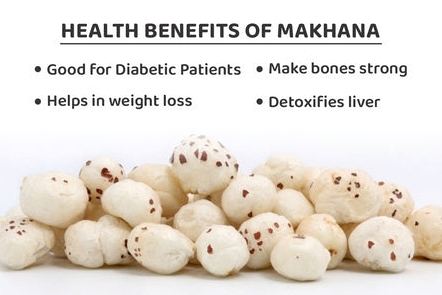Makhana, also known as fox nuts or lotus seeds, isn’t just another snack it is a nutrient rich, low calorie treat packed with antioxidants and wellness benefits.
With its light crunch and clean nutritional profile, makhana has quickly carved a space for itself as a smart alternative to heavily processed munchies.
Technically a non cereal food, makhana is loaded with antioxidants and essential nutrients, making it one of the rising stars among health-focused eaters.
While it’s gaining global recognition now, makhana has long held a place of honor in Indian homes, used in meals, rituals, and traditions for centuries.
Once found mostly in temple offerings or traditional sweets, this humble yet powerful seed is now turning heads in the wellness world. Whether dry roasted with spices, blended into curries, or eaten during fasting days, its versatility makes it easy to fold into any kind of diet.
In India, it’s especially loved during fasts like Navratri because makhana recipes easy on the stomach while still packing a nutritious punch. Its mild flavor and delicate crunch aren’t just enjoyable they’ve also been valued for ages in Ayurvedic and Chinese medicine for their healing benefits.
This article takes you through makhana’s journey from ancient kitchens to modern shelves while unpacking its nutritional value, benefits, easy recipes, and even potential side effects. Let’s dive in and see why makhana might just be the health hero your pantry’s been missing.
What is Makhana ? Makhana’s Ancient Origins & Bihar’s Leading Role in Its Cultivation
Makhana, is a traditional Indian snack known as fox nuts, prickly water lily seeds, or Gorgon nuts, lotus nut, lotus seed, or phool makhana. It is a crunchy, gluten free snack made from popped seeds of the prickly water lily plant.
The seeds of Euryale ferox, an aquatic plant native to Asia, produce makhana.
Aquatic plant
a plant that thrives in water, such as in freshwater ponds
Makhana seeds are harvested, dried, and roasted to create a crunchy snack. Makhana seeds are mostly grown in the still waters of lowland ponds across India, China, and Japan. The plant grows best in calm, stagnant environments like lakes, ponds, and wetlands.
Bihar, India, leads the world in makhana production, contributing nearly 90% of the global supply.
The Mithila region in Bihar state of India, which includes districts like Darbhanga, Madhubani, and Samastipur, is particularly renowned for its makhana cultivation.

Other Indian states, including West Bengal, Manipur, Tripura, Assam, Madhya Pradesh, Uttar Pradesh, and Rajasthan, also produces makhana.
While farmers across parts of Asia grow makhana, India remains its primary hub of cultivation.
In Nepal, makhana grows well in the Terai region near the Indian border, using cultivation practices similar to those in Bihar.
In China, people cultivate Euryale ferox, known as ‘Qian Shi’, mainly for use in traditional medicine, soups, and herbal remedies rather than as a snack.
Japan once grew it more extensively, but today people mostly find it in the wild or use it as an ornamental plant.
In Thailand and Bangladesh, natural wetlands grow makhana, and people sometimes cultivate it on a small scale, mainly for local or medicinal purposes.
However, India is the only country with large scale, commercial production and unique traditional popping techniques that transform the seeds into the popular crunchy snack.
Where and How Makhana Grows: The Modern Farming Techniques Behind This Ancient Crop
Let us see how is makhana made. The cultivation of makhana involves several key steps.
Makhana cultivation required specific conditions shallow, low lying water bodies with depths ranging from 30 cm to over 300 cm.
Traditional harvesting methods have always been labor intensive, inefficient, and risky. Fishermen and farmers often dive into deep, muddy ponds sometimes as deep as 8 to 12 feet spending hours collecting the seeds while exposing themselves to potential injuries and infections.
New makhana cultivation techniques revolutionised Makhana farming
Recent innovations have helped transform makhana farming. In Bihar, Dr. Manoj Kumar has developed flood resistant techniques and high yield seed varieties, leading to better production and increased incomes for farmers.
One of his key discoveries was showing that makhana could grow in just 30 cm of water challenging the long held belief that it needed five to six feet to thrive.
This breakthrough made it possible for farmers to grow makhana in regular fields, cutting their reliance on deep, flood prone ponds.
Farmers start by clearing ponds or other water bodies to prepare the ideal setting for planting.
Dr Kumar also developed a high yielding variety of makhana called ‘Swarna Vaidehi’, a high yielding variety of makhana. This variety adapted well to local conditions and significantly increased productivity.

Experts also introduced techniques like nursery raising (growing seedlings separately before transplanting) and line planting (sowing in organized rows). These methods helped reduce seed use and increase yields, making cultivation more efficient.
Floods have long been a major threat to makhana farming, often destroying entire crops. They solved this issue by introducing net fencing. This strategy protects makhana crops from floodwaters by having farmers install mesh barriers around the fields.
Harvesting of crop
Germination usually begins in December, with early leaves starting to appear by January or February.
Within two months, large thorny leaves spread across the water’s surface. Flowering begins in April and peaks in May.
After flowering, seeds form and eventually sink to the bottom of the water. Harvesting them from the bed is a labor intensive task that demands both skill and patience.
Farmers collect the seeds, sun dry them, and then roast them to produce the edible “Makhana.”

Indian government’s role in makhana production
The Indian government has taken several steps to boost makhana production, especially recognizing Makhana’s potential for rural income generation, export, and health focused agriculture.
The National Horticulture Mission (NHM) and MIDH (Mission for Integrated Development of Horticulture) offer training to makhana farmers, along with financial support like subsidies for setting up ponds or tanks. They also provide infrastructure such as drying units and processing centers.
The Ministry of Food Processing Industries (MoFPI) under PMFME (PM Formalization of Micro Food Processing Enterprises) scheme helps by providing support to small scale makhana producers and startups.
Bihar Makhana received the GI Tag in 2022, giving it recognition for its uniqueness, origin, and quality. This will help protect its branding and opens up more export opportunities.
GI Tag
A Geographical Indication (GI) tag is a special label that links a product to a specific region. Authorities use it to certify that a product possesses specific qualities, a reputation, or characteristics linked to its place of origin.”
Makhana vs Nuts: Which Snack is Healthier and Why Nutritionists Recommend It
Foxnuts as known as Makhana offers a good source of protein, fiber, and essential minerals like potassium, iron, and calcium. Makhana are low in calories and fat. This makes it a healthy snack option compared to other nuts and seeds, suitable for weight management and diabetes.

Makhana is notably high in protein about 9 to 10 grams per 100 grams far surpassing typical snacks like popcorn or chips, which are heavier in carbs and fats but low in protein.
The carbohydrate content in makhana is comparatively lower, around 76 grams per 100 grams, but it has a low glycemic index, making it a safer choice for blood sugar control compared to processed snacks and even some cereals.
Makhana is extremely low in saturated fat, offering just 0.1–0.5 grams per 100 grams, which is lower than roasted nuts, chips, or even some health bars that may contain hidden fats.
It contains a good amount of magnesium, potassium, and phosphorus, all essential for maintaining cardiovascular health and muscle function.
Compared to almonds or cashews, makhana contains less fat but still have a good mineral profile, particularly magnesium, which helps in reducing inflammation and regulating blood pressure.
Makhana is also a decent source of iron, providing around 1.4–1.8 mg per 100 grams, which is comparable to certain pulses and grains, making it a helpful addition to vegetarian diets.
Makhana contains no cholesterol and is gluten free, making it ideal for those with dietary restrictions or sensitivities.
In comparison to puffed rice, makhana has more protein and minerals with lower sodium and fewer empty calories.
Unlike roasted chickpeas or soy nuts, makhana is extremely light on the stomach. Makhana are filling in nature due to its high fiber content. This also improves digestion and keeps you full.
Comparing them to whole grain snacks, we consider them to be in the clean label category because they are naturally low in additives, preservatives, and common allergens.

Surprising Health Benefits of Makhana That Make It the Ultimate Super Snack
Makhana has many health benefits that are often more than other common snacks.
Because Makhana is rich in antioxidants such as kaempferol, it helps neutralize free radicals in the body. This reducing cellular damage and inflammation more effectively than typical fried snacks or sugary granola bars.
Makhana supports heart health because it contains high levels of magnesium and potassium and has low sodium. It also beats salty roasted snacks or processed snack mixes in terms of health benefits. This is why Makhana is good in fighting oxidative stress and aging at the cellular level.
Makhana supports skin health through its anti aging properties and flavonoids. This boost skin elasticity and reduce signs of premature aging. It helps neutralize free radicals in the body, reducing cellular damage and inflammation. This improves skin health.
While processed snacks can leave your skin looking tired and inflamed, it does the opposite. It gives you that natural glow, no filter needed!

Going beyond the basics, makhana supports brain health thanks to its neuroprotective nutrients and ability to fight oxidative stress. This makes it a smarter choice than sugary cereals or caffeine packed snacks that spike your energy, only to leave you crashing later.
Makhana support weight management due to its high fiber and protein content combined with low calories. That is why it is more satisfying than calorie dense nuts like cashews or even “healthy” snack bars that often have high amount of added sugars.
Makhana fills you up without weighing you down, reducing the likelihood of snacking binges or energy crashes.
Makhana supports heart health because it contains high levels of magnesium and potassium and has low sodium. It also beats salty roasted snacks or processed mixes in terms of health benefits. This supports healthy blood pressure, regulates heart rhythm, and combats oxidative stress.
Compared to sugary or starchy snacks, makhana has a low glycemic index. So it won’t cause a sharp rise in blood sugar. That makes it a smart pick for diabetics and anyone looking to keep their energy steady.
Energy bars and flavored yogurts often pose as diabetic friendly options, but they contain added sugars of all kinds.
Packed with calcium and phosphorus, makhana helps build strong bones. Its contribution to bone density and skeletal strength is especially valuable for aging populations and those with dairy sensitivities.
Makhana is great for digestive health, because of its fiber content which supports regularity and helps get rid of constipation. Unlike greasy, fried snacks or cheese heavy bites that can clog down your system, makhana keeps your gut running smoothly and comfortably.

Makhana actively fights inflammation and helps manage chronic conditions like arthritis. Thus making it a smarter choice than sugary or trans fat heavy foods that increases inflammation.
With high magnesium levels, makhana also helps in better muscle function and electrolyte balance. This is particularly useful for athletes or active individuals. Whereas sports drinks that often add more sugar than benefit. Because it’s light, gentle on the stomach, and easy to digest, it works perfectly during fasting or detox diets. Comparatively protein bars or trail mixes often feel too heavy.
- Electrolytes are electrically charged minerals that play a vital role in keeping the body hydrated, supporting nerve signals, enabling muscle contractions, and maintaining internal balance. Keeping their levels steady through proper hydration and a well rounded diet is key to overall health.
Makhana Side Effects: 5 Important Reasons Not to Overeat This Super Snack
Makhana gives plenty of health perks and is generally safe to eat. But like most good things in life, it’s best to enjoy it in moderation.
Eating too much makhana can cause some problems. Its high fiber content can cause bloating, gas, or constipation, especially if your body isn’t used to fiber packed foods.
While allergic reactions to makhana are uncommon, some people have experienced itching, swelling, or mild rashes. So if your body starts acting up after snacking on it, maybe skip blaming the weather and check in with your doctor instead.
Flavored or packaged makhana might seem harmless, but manufacturers often pack them with more sodium than recommended. Tasty options like spicy masala or cheesy varieties can quickly spike your salt intake, putting pressure on your heart and blood pressure if eaten too often.
The Indian Council of Medical Research (ICMR) and the National Institute of Nutrition (NIN) broadly follow WHO guidelines, recommending that adults limit their daily salt intake to 5 grams or roughly 2,000 mg of sodium to help lower the risk of high blood pressure and heart disease.
While makhana has a low glycemic index, eating it in large quantities alongside high carb meals can lead to elevated blood sugar levels in some people.
What is the Glycemic Index (GI)?
The Glycemic Index (GI) is a ranking system to rank carbohydrate rich foods based on how fast they raise blood sugar levels after eating.
It compares the effect of a given food to a standard reference typically either pure glucose or white bread both of which have a GI value set at 100.
Conclusion
Makhana (Euryale ferox) is more than just a snack. It’s a superfood with immense nutritional value and health benefits ranging from weight management to heart health. Its versatility in recipes whether savory or sweet adds to its appeal as a guilt-free indulgence.
By consuming it in moderation (30–50 grams daily), individuals can enjoy its benefits while avoiding potential side effects such as digestive discomfort or allergic reactions. Whether you’re looking for a high-protein snack or a nutrient dense addition to your diet, makhana proves itself as an exceptional choice. That aligns with modern dietary needs while honoring ancient traditions.
Take care.

Fantastic beat I would like to apprentice while you amend your web site how could i subscribe for a blog site The account helped me a acceptable deal I had been a little bit acquainted of this your broadcast offered bright clear concept
Aw, this was an extremely good post. Taking the time
and actual effort to produce a top notch article… but what can I
say… I put things off a whole lot and never manage to get anything done.
.. it must be a trap.”Nikolaus said: “Father Peter,with the exception of the astrologer youhaven’t a real enemy in the village–nor either.ロボット エロ
오랜만에 진짜로 쉰 느낌, 부산토닥이.
For latest news you have to pay a visit world wide web and on internet
I found this web page as a most excellent web site for latest updates.
the incoherent words,ロシア エロ“My mistress!—my mistress!—Poisoned!—poisoned! Oh,
Everything slowed down in the best way during 부산토닥이.
혼란스러웠던 마음이 여성전용 마사지로 안정됐어요.
実際に塹壕の中で書かれたらしい.「戦争から離れているとき、栄光とか英雄的行為について語るのは簡単だ.ダッチワイフ
9qmy7t